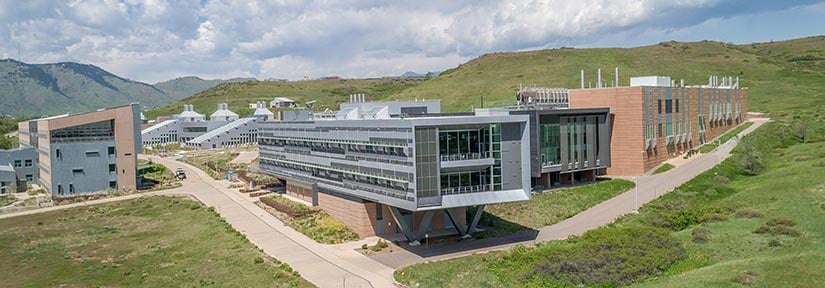About the Energy Systems Integration Facility
The Energy Systems Integration Facility (ESIF) is the United States' premier lab focused on energy systems research, development, and demonstration. It is where new technologies are evaluated using state-of-the-art equipment and resources.

The ESIF laboratories are designed to discover and validate scalable, interoperable solutions that unlock new pathways for integrating America's abundant energy resources.
Dynamics driving research at the facility include:
- Demand for energy has increased to support artificial intelligence, manufacturing, and other large loads.
- Cyber, physical, and geopolitical disruptions threaten the reliability and security of the energy system.
- Energy at the grid edge isn’t just passively consumed but generated, stored, managed, and traded.
- Sectors that once operated in silos—electricity, natural gas, transportation, water, and telecommunications—are overlapping and interconnecting with one another.
These exciting dynamics are creating urgent challenges. The ESIF makes it possible to answer "what if?" questions and evaluate the most cost-effective and resilient solutions.
Partners choose the ESIF to accelerate innovation and validate energy systems in real-world conditions—reducing cost, risk, and time to market. The facility's unparalleled and state-of-the-art capabilities and technologies can be configured to fit a multitude of technology integration use cases and grid scenarios.
ARIES Brings Real-World Scale
The ESIF is a key part of a visionary research platform at NLR called Advanced Research on Integrated Energy Systems, or ARIES.
ARIES leverages existing capabilities at the ESIF, at NLR's Flatirons Campus, and a virtual emulation environment connecting hardware assets at these sites with millions of digitally emulated devices. A high-speed data link supported by ARIES connects the ESIF with other national laboratories and research partners in a “SuperLab” with a greater array of research capabilities.
A Facility With Innovation Built In
The foundation of the ESIF is its infrastructure. In addition to extensive fixed laboratory equipment, the facility incorporates electrical, thermal, fuels, and data acquisition bus work throughout. Learn more about the ESIF's key infrastructure.
Want to see the ESIF in action?
Learn how to use our labs for your own research.
Share
Last Updated Dec. 30, 2025
